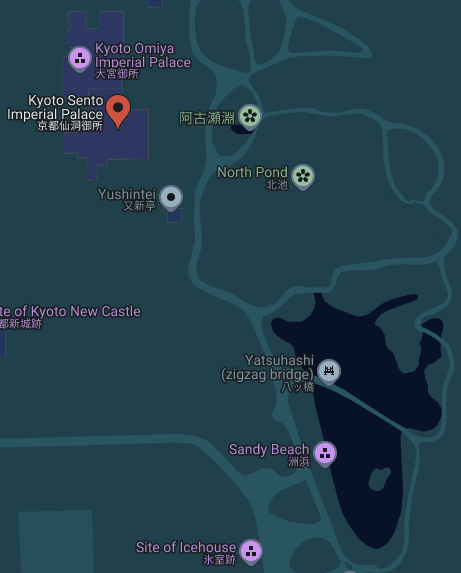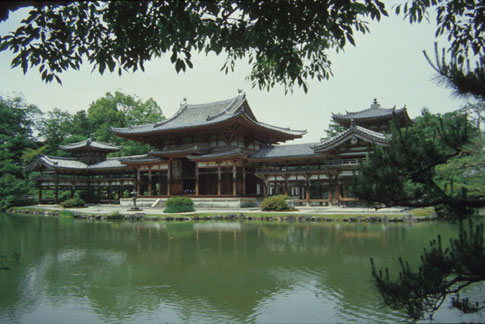
The Sento Palace was constructed early in the seventeenth century within the larger Imperial Palace complex as a residence for the retired Emperor Gomizuno-o. The palace no longer exists, but the garden located to the east of the palace has survived in roughly its original form. Attributed to Kobori Enshu, the garden consists of two ponds connected by a narrow waterway and surrounded by paths for strolling. The southern pond contains two islands connected to each other and to the shore, and part of the shore consists of a pebble beach, each stone of which was carefully chosen for its size and shape. Choose a view point from the map or click Tour the Garden for more views of this garden.
Early in the seventeenth century, the Tokugawa Shogunate ordered the construction of two palaces to be located to the southeast of the Imperial Palace of Kyoto (Kyoto Gosho). One, the Sento Palace, was intended as the residence for the retired Emperor Gomizuno-o. The other, the Omiya Palace, was the home of the Empress Dowager Tofukumon-in (a daughter of the second Tokugawa Shogun). Both structures were repeatedly destroyed by fires and rebuilt, so that today only the Omiya Palace remains, and on a much reduced scale. The gardens located to the east of the palaces center upon two ponds once separated by a wall but now connected by a narrow thoroughfare. They are stroll gardens, with a series of paths that circle the ponds and provide access to some of the islands in the South Pond, which is the more complicated of the two bodies of water. It is essentially divided in half by two islands and the bridges that connect them to each other and to the shores of the pond. One of the most unusual elements of this South Pond is a pebble beach that runs along the western and southern shores, each stone of which was chosen for its smoothly rounded contours and generally uniform size. Harvested from a site near Mt. Fuji, the stones were a gift from the daimyo of Odawara, and it is said that each stone arrived at the site in its own silk wrapping. There is archaeological evidence that this kind of stony beach (ishihama) was a feature of the earliest gardens of Asuka and Nara.

